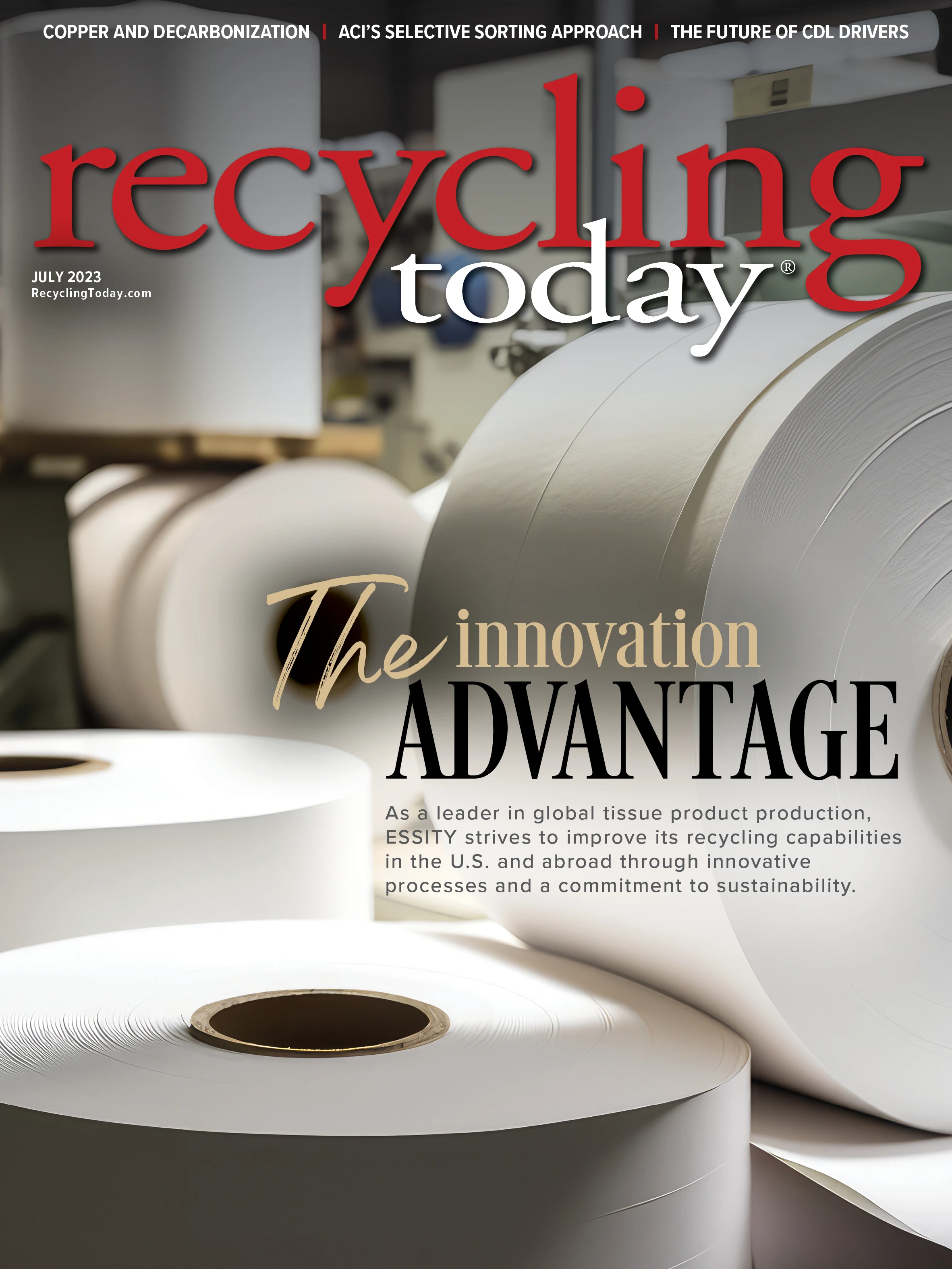
Central bankers around the world, including in the U.S., have focused on controlling inflation. In the metals and minerals commodity markets, anti-inflation efforts could have yielded the hoped-for results.
The inflation seems to stem from the geopolitical events of the past three years: the COVID-19 pandemic, questions about over-reliance on Chinese-made goods and exposed supply chains and Russia’s invasion of Ukraine and the series of economic countermeasures.
By May, overall inflation measurements were yielding lower numbers in the U.S. and Europe, which was hit hardest by energy and commodity disruptions tied to the war.
In April, the average price of copper on the COMEX exchange fell 26 cents per pound, while U.S. ferrous scrap prices measured by Management Science Associates Inc.’s Raw Material Data Aggregation Service (RMDAS) in May dropped $25 to $36 per ton.
In the past 30 days, mills have paid $462 per ton on average for shred but $362 per ton for HMS; such a discrepancy often can be blamed on weaknesses in export markets.
Adding to the notion that inflation, particularly commodity inflation, could have been tamed are results of surveys tied to gasoline prices in the U.S. A price survey in Ohio found that even the travel-heavy Memorial Day weekend could not stem an average decline of 10 cents per gallon at the pump in the northeast part of the state.
Price volatility remains a certainty, and geopolitical events are unpredictable. Scrap processors, however, are among those trying to determine whether expenses and income are likely to be less affected by inflation in the second half of the year compared with the previous 30 months.
On the supply side, a recycler in the Midwest says despite lower scale prices for iron and copper in May, he experienced a slight uptick in inbound volumes, attributing increased spring cleanup and demolition activities as sources for obsolete grades.
Sellers and buyers of prompt scrap have watched RMDAS No. 1 busheling plunge from $650 per ton in June 2022 to a temporary trough of $357 per ton in November.
Subsequently, the grade has trended upward, hitting a temporary peak of $561 per ton in April before receding to $536 in the most recent 30-day period.

The obsolete shredded and HMS grades largely have followed the same down-up-down curve, though No. 1 busheling gained more value during market peaks this year and last, and its spread has widened.
Last June, mills in the U.S. paid an average of $255 per ton for No. 1 busheling compared with No. 1 HMS. The prompt grade also was worth $169 more per ton compared with shred that month.
By October of last year, the spread between No. 1 busheling and shred had disappeared entirely, with mills paying $2 more per ton for shred on average. That market anomaly lasted into November and December before No. 1 busheling regained a top-value position.
According to RMDAS, mills in late April and throughout May paid $74 more per ton for No. 1 busheling compared with shred—a type of spread that has become common in the U.S. market.
A noteworthy spread in the current market involves the difference in value between shred and HMS. Per RMDAS, U.S. mills paid $462 per ton on average for shred but just $362 per ton for HMS in May.
Such a discrepancy usually can be blamed on weaknesses in export markets, with overseas bulk shipment buyers most commonly seeking HMS grades.
Data collected by the U.S. Department of Commerce and aggregated by the U.S. Geological Survey show ferrous scrap exporters experienced some swings in their markets last year.

One of the widest differences involved Pakistan, where buyers went from receiving more than 730,000 metric tons of scrap from the U.S. in 2021 to 455,000 metric tons last year.
An ongoing shortage of U.S. dollars in Pakistan reportedly has it struggling to stay active in the U.S. scrap market, a condition that most affects shippers on the East Coast and Gulf Coast.
India emerged as an even more significant buyer of U.S. ferrous scrap last year, nearly tripling its total to 1.74 metric tons from the 633,000 tons it bought in 2021.
Only Turkey and Mexico purchased more outbound U.S. scrap than India did last year. In 2021, India placed behind Turkey and Mexico, as well as Malaysia, Vietnam, Taiwan, Bangladesh, Canada and South Korea.

Explore the July 2023 Issue
Check out more from this issue and find your next story to read.
Latest from Recycling Today
- LumiCup offers single-use plastic alternative
- European project yields recycled-content ABS
- ICM to host colocated events in Shanghai
- Astera runs into NIMBY concerns in Colorado
- ReMA opposes European efforts seeking export restrictions for recyclables
- Fresh Perspective: Raj Bagaria
- Saica announces plans for second US site
- Update: Novelis produces first aluminum coil made fully from recycled end-of-life automotive scrap






